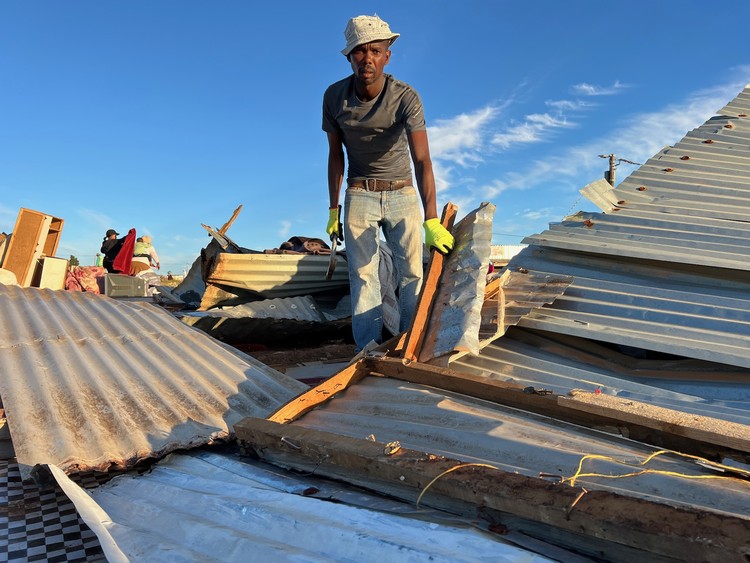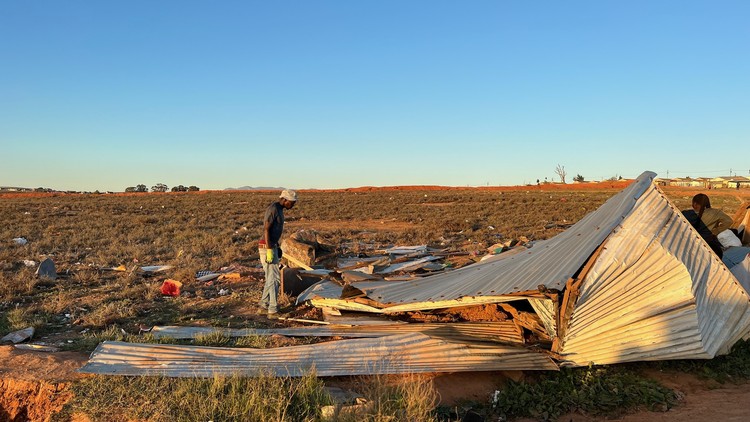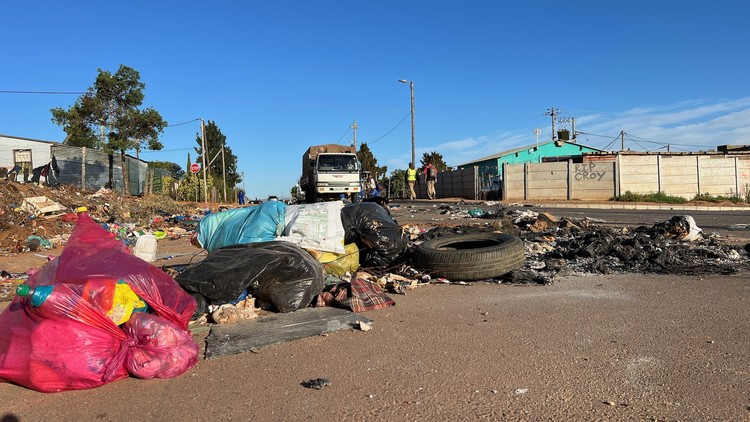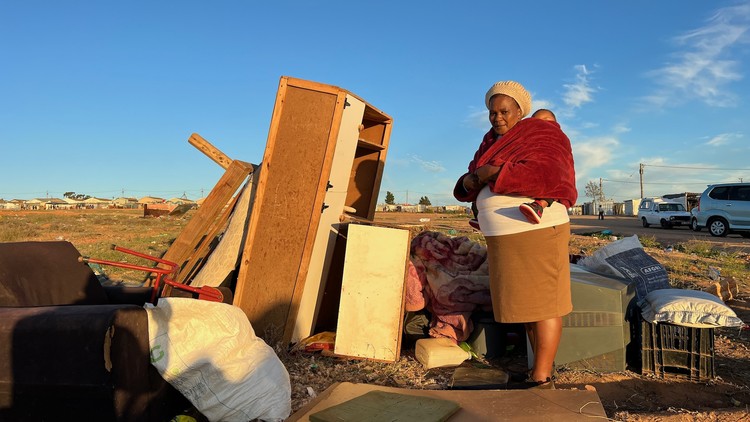Swartland law enforcement demolish shacks on land earmarked for housing development
About 250 people attempted to occupy land reserved for the De Hoop housing development in Malmesbury
On Sunday, Sabeleni Zimele occupied vacant municipal land earmarked for a housing development in Lingelethu township, Malmesbury. On Tuesday morning while he was at work, his shack was demolished by the Swartland law enforcement. Photos: Peter Luhanga
- On Sunday and Monday about 250 people erected shacks on vacant land in Lingelethu township in Malmesbury, Swartland.
- The municipal land is earmarked for 2,500 “housing opportunities” in the De Hoop housing development.
- The municipality says it was acting in the best interests of the greater community.
- One of the occupiers says he has been on the housing list for ten years.
On Sunday, 36-year-old Sabeleni Zimele bought zinc sheets and wood and erected a shack on vacant land in Lingelethu, Malmesbury. Other residents followed him. Some marked out and prepared plots to erect shacks later, while others had already erected their structures by Monday.
But the municipality-owned land is earmarked for phase 1 of the De Hoop housing development, which will create 2,500 “housing opportunities”.
Swartland Law Enforcement tore down the structures on Tuesday.
The occupiers responded by burning tyres and strewing trash along Alfa Street in the township.
Malmesbury SAPS spokesperson Captain Marko Heydenrych said approximately 250 people were busy erecting informal structures when Swartland law enforcement arrived, responding to complaints about the “land invasion” in progress. The officials were stoned, and SAPS and public order police (POPs) were called to the scene. He said they used rubber bullets and teargas to disperse the crowd.
Sabeleni Zimele salvaging his household belongings after his shack was broken down by the Swartland law enforcement officials on Tuesday
Zimele said he was at work on Tuesday when his friend called to alert him that his shack was being torn down. Zimele told GroundUp that his partner was in the shack feeding their three-month-old infant when law enforcement arrived and ordered her to vacate the shack.
When he arrived he found officials with “big metal hammers” knocking down his new home. He pleaded with them not to destroy his shack, built with materials worth R5,800. He says his household belongings and furniture were left damaged and scattered about.
“They’ll just have to kill me here. When we ask for services they say we must wait. I am still on a housing waiting list,” said Zimele. He said he has been on the housing list since 2013.
Zimele says he has been living in Malmesbury since 2006. He has been renting in an adjacent informal settlement.
Zimele claims Ward 9 Councillor Mkhululi Ngozi (ANC) told them that if more than five shacks were erected on the land he would support the occupation.
However, Councillor Ngozi says he went to stop the occupation before law enforcement arrived, and that he had explained to the community at a meeting afterwards that the Swartland Municipality needed the land for a housing project.
Frustrated land occupiers burnt tyres and strew trash along Alfa Street, Lingelethu.
Swartland municipal manager Joggie Scholtz said the municipality “reserves the right not to comment on the allegations being made with regards to the actions of Law Enforcement and POPs”.
He said the land is reserved for building an estimated 2,500 housing opportunities. The funding for 1,013 of these over the next two financial years has been published in the Provincial Gazette of 14 March 2023.
He said the land has had site development plan status since 16 May 2022 and R30-million of bulk service infrastructure has already been installed.
In a statement on Tuesday, Swartland municipal spokesperson Mart-Marié Haasbroek said the municipality was making “every effort” to prevent a land grab.
Haasbroek said the municipality met with representatives of the people attempting to erect structures on Monday and it was explained to them why they should not occupy the land.
“The municipality has an obligation to act and protect the interest of the greater community. Under no circumstances can the illegal action of a few people be allowed to compromise thousands of residents who have been patiently waiting on housing lists for years,” she said.
Ncediwe Stentyi, 47, guards her daughter’s belongings after her shack was demolished and the building materials confiscated while her daughter was at work. Stentyi said overcrowding had made her daughter move to the land. “It is very painful. I told my daughter not to move out. I told her that that land is not allowed to build shacks. She said we [parents]also fought for service delivery in our time and that now it is her time to fight for services,” said Stentyi.
Support independent journalism
Donate using Payfast

Don't miss out on the latest news
We respect your privacy, and promise we won't spam you.
Next: Canoe polo: Stellenbosch farm children paddle to success
Previous: Financial services company ordered to pay client more than R800,000 lost in cybercrime fraud
© 2023 GroundUp. This article is licensed under a Creative Commons Attribution-NoDerivatives 4.0 International License.
You may republish this article, so long as you credit the authors and GroundUp, and do not change the text. Please include a link back to the original article.
We put an invisible pixel in the article so that we can count traffic to republishers. All analytics tools are solely on our servers. We do not give our logs to any third party. Logs are deleted after two weeks. We do not use any IP address identifying information except to count regional traffic. We are solely interested in counting hits, not tracking users. If you republish, please do not delete the invisible pixel.




